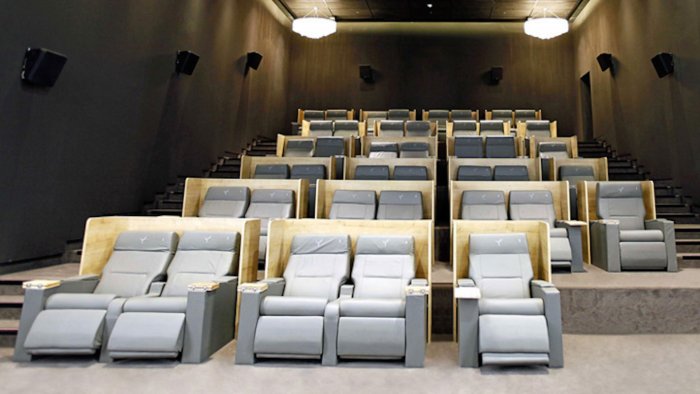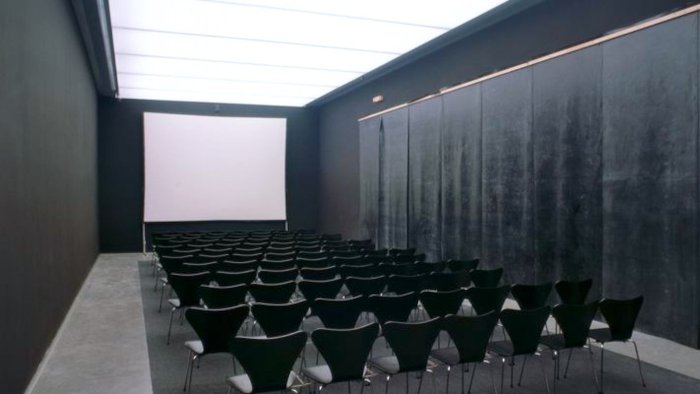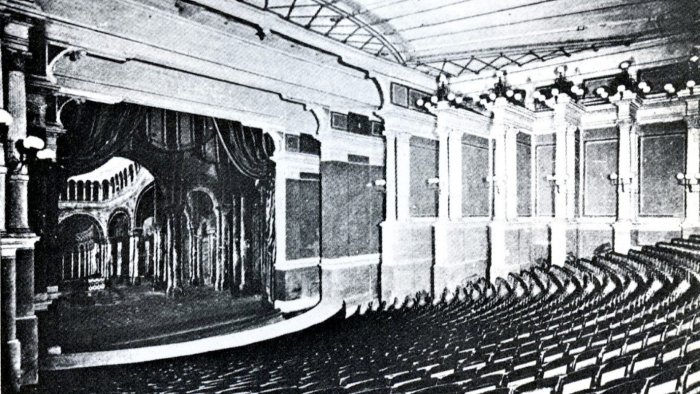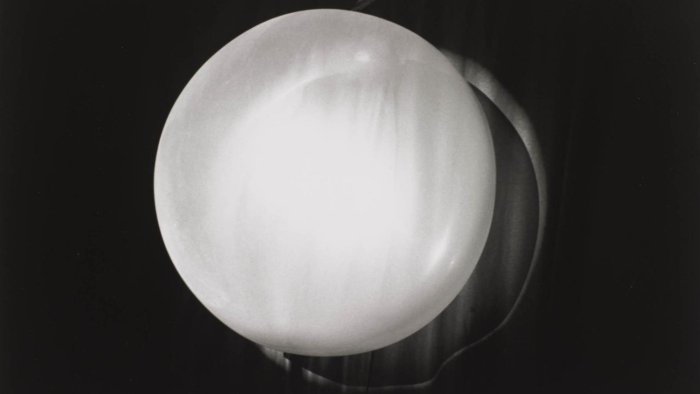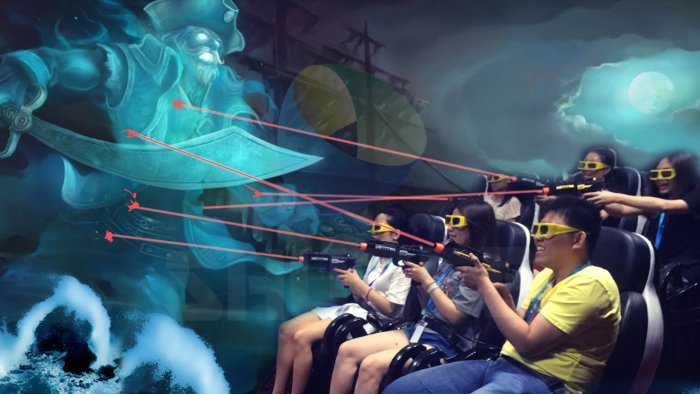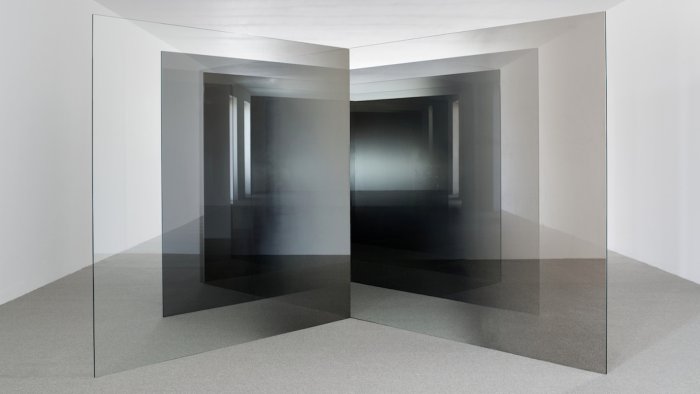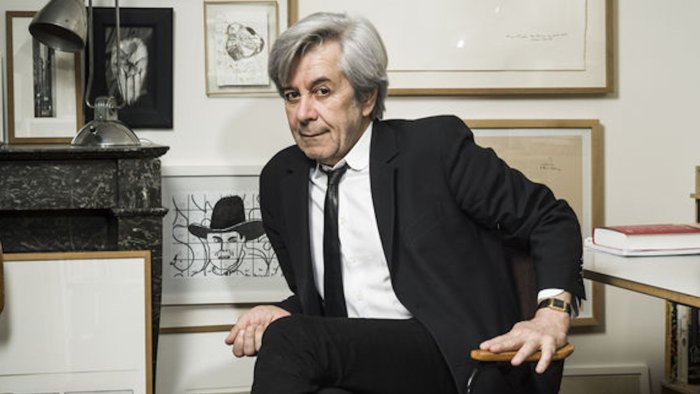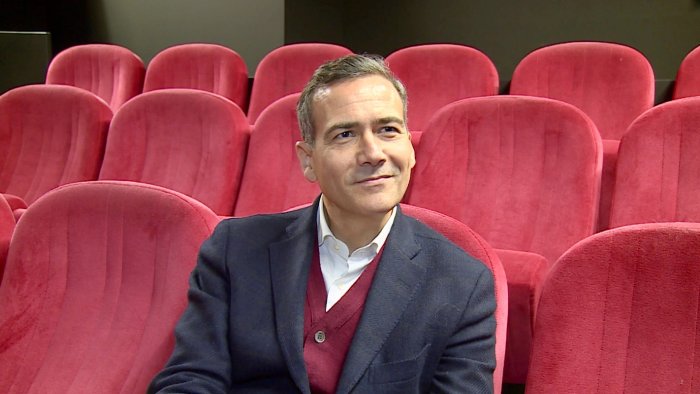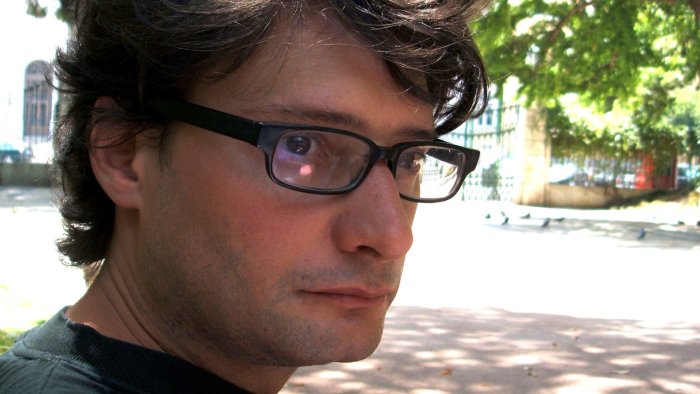Introduction to the Thematic Area | Giuseppe Di Salvatore
The well-established debate on the distinction between the formats of the black box – traditionally exemplified by the cinema theatre – and the white cube – traditionally exemplified by the art gallery or the exhibition space – invites us to go deeper into the question of the reception of moving images. Do these two formats allow us room to speak of two different experiences of the moving image? This debate has its roots in the much older debate that arose at the very beginnings of cinema, in the XIX century, on the various means of projecting moving images. Through the advent of digital technology, the debate has been revived, mostly in the Nineties. Starting from this moment, new experiences of presenting moving images have urged a programmatic reformulation of the distinction between the black box and the white cube, a reformulation that often aims at an explicit apology of their hybridization. Today we should raise another question: do hybrid forms of reception have to be seen as the result of the hybridization between the black box and the white cube at all, or is it time to put this distinction aside?
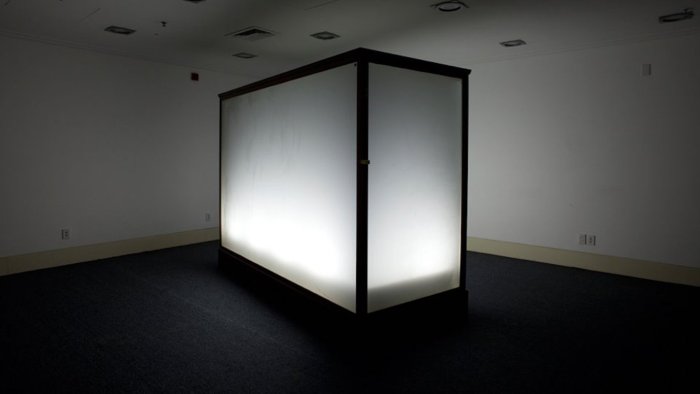
Overview
1. The Privatization of the Reception of the Moving Images
2. Why Focus on the Distinction Between the Black Box and the White Cube
3. The Obscure and Romantic Roots of the Black Box
4. Experiments and the Modernist drive
5. Categorization and Digitalization
6. Hybridization or just hybridity
7. The Contributions of this Thematic Area
The privatization of the reception of the moving images
The question of the reception of moving images needs to be reconsidered, not least because it seems to be disappearing from the public discussion, which is almost exclusively preoccupied with the questions of production and promotion. One reason for its disappearance is certainly the cheap relativist use of the idea of interpretation: the privatization of the conditions for the reception of moving images (to which the success of television and the diffusion of the personal digital devices supporting moving images have largely contributed) has lead many people to believe that the way one receives moving images is fundamentally private, and thus, it is a question of personal interpretation and private opinions. This explains how the crisis of authoritative criticism has developed together with the lack of interest in the general question regarding the reception of the moving images.
Why focus on the distinction between the black box and the white cube
One concrete way to return to the question of the reception of moving images is to consider it from the point of view of the material conditions of their reception. How do we actually see movies? Where and how do we experience the moving images? In which context? In which spatial situation? We witness the multiplication of devices supporting moving images: smartphones, tablets, computer screens, televisions becoming giant domestic screens, video games consoles, the occasional public screen in commercial stores or sport and concert venues, etc. But, this multiplication of devices should not let us forget that the way in which we use them is still largely dependent on the two main situations that we have habitually experienced in the past as we have tended to view moving images: the cinema theatre and the exhibition space. What has been called the “black box” – usually referring to the cinema theatres – and the “white cube” – usually referring to the art gallery or the museum – legitimately constitute two sorts of models through which we can approach the question regarding the material conditions for the reception of moving images.
The importance of this distinction lies in its ability to underline the most important features describing the situation of our reception of moving images, which are: in the black box – the immersion, which is favoured by the darkening of the space in which the moving images are projected or diffused; in the white cube – the freedom of movement for the spectator/visitor in the exhibition space. Different degrees of interaction between the viewer and the images themselves can be distinguished. Moreover, the status of the moving images will change: mainly, in their overtly or delusively fictional dimension and their temporal unity or definition.
The obscure and romantic roots of the black box
The black box is nothing but the cinema theatre or, more precisely, the theatre when it is completely darkened. Now, we must not forget that this is a very recent “invention”: apparently, it was Richard Wagner who first introduced the “rule” of switching off the lights in the theatre. This move is coherent with his romantic aesthetics, which aims to capture the spectator and integrate her/him in the adventure of his Gesamtkunstwerk (total artwork). A totalitarian move that was anticipated by the champion of German romanticism, Caspar David Friedrich, who had favoured the dissolution of the frame from the painting. Without frame or distance, we spectators become part of a totalitarian project; one that is mastered by the author, by the magic of its oeuvre – the German words Magie and Mögen share the same root, meaning “power” (Macht). If one would dare to speak of an “obscurantism” of the black box, she/he would probably be entitled to do so…
Cinema, as seen in a “black” cinema theatre, gained incredible popularity in the Tens and Twenties of the last century, thus also experiencing a rapid process of institutionalization: the commercial solution of using the projection of moving images for mass entertainment crystalized the form of the “black box” as the immersive experience par excellence. This was reinforced by the introduction of the sound movies: in eliminating the theatrical dimension created by the presence of a piano, organ or orchestra, the screen took on an absolute power.
Experiments and the Modernist drive
The rapid institutionalization of the black box cinema theatre also implied that this format had become a target of criticism. This stimulated the consideration of the cinema screen, as well as the physical situation of the darkened cinema theatre, as an “object” to reflect upon, manipulate, and experiment with. The triumph of the “institutional” cinema as black box coincided with the explosion of the experimental era of moving images, after the Second World War (the Lettrist cinema of Guy Debord and Gil J Wolman are clear examples of manipulative experiments in cinema).
The experimental attitude can also be a way to get back to the origins of cinema, insofar as the beginnings of cinema are marked with a “brighter” situation of projection, in that, films were not projected in darkened theatres, but rather with the lights on. The earliest movies, even if largely based on the amazement for filmic delusion, were conceived as shows, as exhibitions, where the curiosity for machines and the projective dispositive had to be equally satisfied. At least two elements influenced the artists working on moving images to favour the context of the “white cube”: the need to maintain continuity with the earliest experiences of cinema, and the Modernist attitude of reflecting on the medium itself. Contrary to the romantic approach mentioned above, the white cube (literally) highlights the frame of the moving images, the framework of the projection, the projecting machines, and is particularly interested in involving the audience and considering it as a participating element. Even an “institution” of classical cinema, like Alfred Hitchcock, can be included in this Modernist line insofar as, at least in the movies from his American period, he has explicitly devoted himself to a reflection on the centrality of the audience.
From this perspective, the conceptual approach to art, which has largely dominated the art world in the last decades of the last century, can be considered an extension and reformulation of the Modernist drive, for it shares with it the need for making something visible through reflection. It is probably not a coincidence that the consecration and institutionalization of the gallery space as a perfectly white cube came together with the apogee of conceptualism in the arts. The successive boom of curation as the main interest in the art world, and equally in the cinematic world – see the increasing success of film festivals and curated exhibitions on films or film authors – can, again, be seen as the farthest reformulation of the manipulative attitude of Modernism and conceptualism.
Categorization and digitalization
These rough and exaggerated reflections are only meant to stress how much is hiding behind the notions of “black box” and “white cube”. Independently of the specific history of the debate on these notions (which we will consider in the other contributions of this thematic area), they represent two (or more) modes for the reception of moving images that have largely determined the complex history of cinema and moving images. Their importance, of course, remains dependent on the specific institutionalization of the cinema theatre and the art gallery as two major venues for reception, as two standards. If such standards really exist or are produced to merely satisfy the theoretical need for sharp categorizations, it is an open question – certainly an important one that will probably show us how much the milieu of the art world has been responsible for this categorization.
However, we cannot deny the important impact that the digital revolution had on the divide between the black box and the white cube. Technological enhancements in the production of digital moving images has slowly made the distinction between video and film obsolete, insofar as films have been digitized and video formats have improved their quality to support projections onto large screens, thus reproducing one of the aspects that has been essential to cinema. The obsolescence of the distinction between video and film has probably been relevant in showing how the distinction between the disciplines of art and cinema could refer – again – only to the differences between the contexts and methods of projection of moving images. This argument has lead many to underestimate what is probably the only clear reason that the art world and cinema world have become so sharply distinguished from one another; the reason lies in their different economies and in their very different ways of producing moving images.
Hybridization or just hybridty?
Where are we now? We see more and more exhibitions on cinema as an institution, on filmmakers, on films and film trends: cinema has become an object of musealisation, which not only means being an archival object of conservation, of documentation, but also an exhibited object (for more on this particular phenomenon see the interview with Dominique Païni). At the same time, film festivals are multiplying and, as the cinema theatres continue to sink into an inveterate crisis, the festival is emerging as the place where, thanks to the commercial attraction of “large events” – which can broadly be included in the category of the “white cube” –, the experience of the black box can be still propagated. These two realities can be reformulated as hybrids between black boxes and white cubes, more precisely, they are black boxes in white cubes. From this point of view, even the intensifying presence of public screens in stores, on public transport, at entertainment events (sports or music events, for example), etc., can be considered as a way to apply the immersive-delusive modality of the black box to the white cube context of the urban space.
On the other side of this, we can easily detect many forms of “whitening” the classical format of the black box: films playing with different screen formats; an increasing importance given to the audience up to and including direct audience-participation in the screening of a movie, like in the case of interactive cinema; an increasing organization of movie concerts (ciné-concerts) that seem to conjoin the scattered habit of using films during concerts and theatre shows; more generally, all of the forms that reposition the projection of a film within the context of a special event participate in this phenomenon of “whitening” the black box format, thus creating a hybrid format.
Finally, there is a widespread consciousness by the artists and the curators of exhibition spaces putting forward what we could be called “grey” contexts for the projection of the moving images: multi-channel projections in darkened rooms that are meant to break the experience of immersion, precise paths of “deambulation” within the darkened spaces that emphasise the freedom of movement of the visitor, installations that highlight the black box situation through a theatrical mise-en-scène (with cinema seats or terraces) – where the black box becomes a sort of material quotation – or, for example, through the overt installation of a 16mm projection machine.
The examples multiply, but the important question to ask is: do all of these hybrid forms have to be considered as the result of a process of hybridization that start from the models of the black box and the white cube, or should we free ourselves from these models and start to see the hybrid forms as independent of any process of hybridization, and just as a variety of solutions to the problem of receiving moving images in order to convey the most adequate way to experience them? The explicit objective of our inquiry in this Forum is to discuss the debate about the black box and the white cube and to stress the complexity of the questions that hide behind these categories, with the intention of challenging them. I think that the incredible variety of material conditions that we have today for experiencing moving images should be taken as a challenge to “de-institutionalize” the existing formats of reception, to free them from any rigid standardization. This will be a way to defend a perfect continuity between art and cinema, and to focus again on experience as the most important criterion when analysing different ways of receiving moving images.
The contributions of this thematic area
Dominique Païni has been a pioneer and is still an advocate for the importance of- and interest in exhibiting the cinema through its filmmakers and their films. His exhibitions at the Centre Pompidou and the Cinémathèque in Paris have become a benchmark, putting forward a concept of the exhibition as a way for the visitor to discover and understand new aspects of art of cinema. In the interview, he still defends the unicity of the experience of cinema in a cinema theatre, and considers the experience in an exhibition space as a complementary occasion for a different approach to the filmmakers and the films. Therefore, the black box and the white cube install a dialectic, where the role of the exhibition (and of its curator) is to propose a critical stance, moving freely from the documentary task to the expression of a poetic view.
The experience of Andrea Bellini at the Centre d’art contemporain in Geneva is a concrete example of how we have overcome the rigid distinction between the black box and the white cube. His approach as a curator, and more precisely as curator of the Biennale de l’Image en Mouvement, shows how the hybridization of the two formats can now be conceived as a starting point, or as a natural way to deal with the question of the exhibition of moving images. In the interview, he stresses that it is the specificity of each artwork that determines the best way for its exhibition, which is to be found by using all of the possibilities that the old and new technologies offer to us.
The contribution of François Bovier, professor at the University of Lausanne, critically interrogates the question of the exhibition of moving images and the alleged divide between the black box and the white cube in a broader historical context. From his very informed perspective, we learn through the interview how hybrid the context of projection of moving images has always been, especially in those more intense seasons of experimentation with moving images that have regularly coincided with the introduction of new technological possibilities concerning the production and reception of moving images. This amounts to a sharp criticism of the meaningfulness of speaking in terms of the “black box” and “white cube” today, whose crystallization only responds to the need for standard concepts.
Fabienne Liptay, professor at the University of Zurich, where she is starting a 6-year research project on the topic of the exhibition of moving images, takes an equally critical stance towards the divide between the black box and the white cube, considering it an oversimplification. She will expand the debate on the hybridization of these two formats through a broader reconsideration of the notion of “format”. In the interview, she highlights the economical and socio-political impact of the standardization of formats, and proposes to read this tendency towards standardization as the expression of a post-colonial attitude of control and domination. From this point of view, the debate on the black box and white cube should be interpreted in terms of “blackness” and “whiteness”, which would give us an interesting reading of the idea of hybridization.
For a more detailed study on the topics concerning this thematic area, we refer to the short bibliographies available in the contributions written by François Bovier and Fabienne Liptay.
Photos copyrights:
© Lisa Munnelly
© Larry Bell
